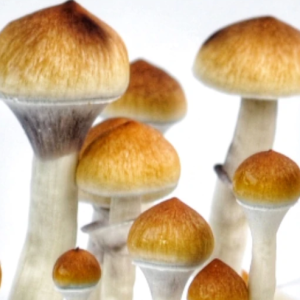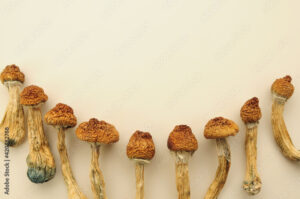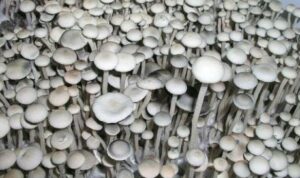Introduction
Exploring the Potential of Microdosing Psilocybin for Depression
In recent years, the practice of microdosing psilocybin, a naturally occurring psychedelic compound found in certain mushrooms, has gained attention as a potential tool for managing depression. This article delves into the considerations and steps involved in safely incorporating microdosing psilocybin into a depression treatment regimen in the USA. From understanding the science behind microdosing to navigating legal complexities and establishing a reliable dosing routine, individuals seeking alternative approaches to alleviate depression symptoms will find valuable insights and guidance to embark on this journey towards improved mental well-being.
## 1. Understanding Microdosing Psilocybin for Depression
### The Science behind Psilocybin’s Potential Benefits
Psilocybin, the active compound in magic mushrooms, has shown promise in alleviating symptoms of depression by influencing serotonin receptors in the brain. Research suggests that microdosing psilocybin may help improve mood, creativity, and overall well-being.
### How Microdosing Differs from Macro-Dosing
Microdosing involves taking sub-perceptual doses of psilocybin, typically every few days. This approach aims to harness the therapeutic benefits of the compound while minimizing the psychedelic effects associated with larger doses taken for recreational purposes.
## 2. Legal Considerations and Regulations in the USA
### Overview of Psilocybin’s Legal Status in the USA
Currently, psilocybin is categorized as a Schedule I controlled substance at the federal level in the USA, meaning it is illegal to possess or use without authorization. However, some states and cities have started to decriminalize or explore the therapeutic potential of psilocybin in regulated settings.
### Understanding the Risks and Legal Implications
Despite shifting attitudes towards psychedelics, it’s crucial to be aware of the legal implications and potential risks associated with possessing and using psilocybin outside of approved medical contexts. Engaging in illegal activities can have serious consequences.
## 3. Finding a Reliable Source for Psilocybin
### Researching and Identifying Trustworthy Suppliers
When considering microdosing psilocybin, it’s essential to source it from reputable suppliers who prioritize quality, safety, and transparency. Conduct thorough research, read reviews, and seek recommendations from trusted sources to ensure you are obtaining a reliable product.
### Quality Control and Testing Measures
To mitigate potential risks associated with consuming psilocybin, opt for suppliers who conduct rigorous quality control measures, such as testing for potency, purity, and contaminants. Prioritizing quality ensures a safer and more consistent microdosing experience.
## 4. Establishing a Safe and Consistent Dosage Regimen
### Starting with Minimal Dosage and Gradual Increase
Begin your microdosing journey with a minimal dose of psilocybin and gradually adjust based on your body’s response. It’s recommended to start low to gauge how your body reacts and then incrementally increase the dosage as needed while monitoring for any adverse effects.
### Creating a Dosage Schedule and Routine
Consistency is key when microdosing psilocybin for depression. Establish a dosage schedule that aligns with your goals and daily routine. Whether dosing every other day or following a specific regimen, maintaining a consistent approach can help optimize the therapeutic benefits over time.
5. Monitoring and Managing Potential Side Effects
Common Side Effects and How to Address Them
When dipping your toe into the world of microdosing psilocybin, you may encounter some minor side effects such as nausea, headaches, or changes in mood. To address these, stay hydrated, ensure you’re getting enough rest, and consider adjusting your dosage or frequency. Remember, it’s a journey, not a race.
When to Seek Medical Help or Adjust Dosage
If you experience severe or persistent side effects like increased anxiety or hallucinations, it’s crucial to seek medical help. Additionally, if you notice no improvement in your symptoms or if they worsen, consult with a healthcare professional to adjust your dosage or explore alternative treatments.
6. Integrating Microdosing into Daily Life and Routine
Developing a Mindfulness Practice and Journaling
To enhance the benefits of microdosing, consider incorporating mindfulness practices and journaling into your daily routine. These tools can help you stay grounded, track your progress, and reflect on any changes in your mental health.
Combining Microdosing with Therapy or Other Treatments
Microdosing can complement therapy or other treatments for depression. Discuss with your therapist or healthcare provider how to integrate microdosing into your overall mental health plan. Remember, it’s about finding what works best for you.
7. Tracking Progress and Effectiveness
Establishing Metrics and Tools for Tracking Progress
Set specific metrics, such as mood changes, energy levels, or productivity, to track the effectiveness of microdosing. Utilize tools like mood journals or mental health apps to monitor your progress consistently.
Reflecting on Mood, Behavior, and Overall Well-Being
Regularly reflect on your mood, behavior, and overall well-being to gauge the impact of microdosing. Notice any patterns or shifts in your mental health and discuss them with your support network or healthcare provider.
8. Seeking Professional Guidance and Support
The Role of Therapists and Healthcare Providers in Microdosing
Therapists and healthcare providers can play a crucial role in supporting you through your microdosing journey. Share your experiences, concerns, and progress with them to ensure you’re on the right track.
Importance of Open Communication and Collaboration with Professionals
Maintain open communication and collaboration with your healthcare team when microdosing. Transparency about your experiences and any changes in your symptoms can help them provide tailored guidance and support for your mental health needs. Remember, they’re here to help you navigate this path safely and effectively.
Closing Thoughts
Embracing a New Path towards Mental Wellness
As you navigate the realm of microdosing psilocybin for depression, remember that safety, mindfulness, and informed decision-making are paramount. By following the guidelines outlined in this article and seeking support from healthcare professionals where needed, you can embark on a journey of exploration and self-discovery to potentially alleviate the burdens of depression. May this holistic approach to mental wellness empower you to embrace new possibilities and find renewed hope on your path to a brighter future.
















